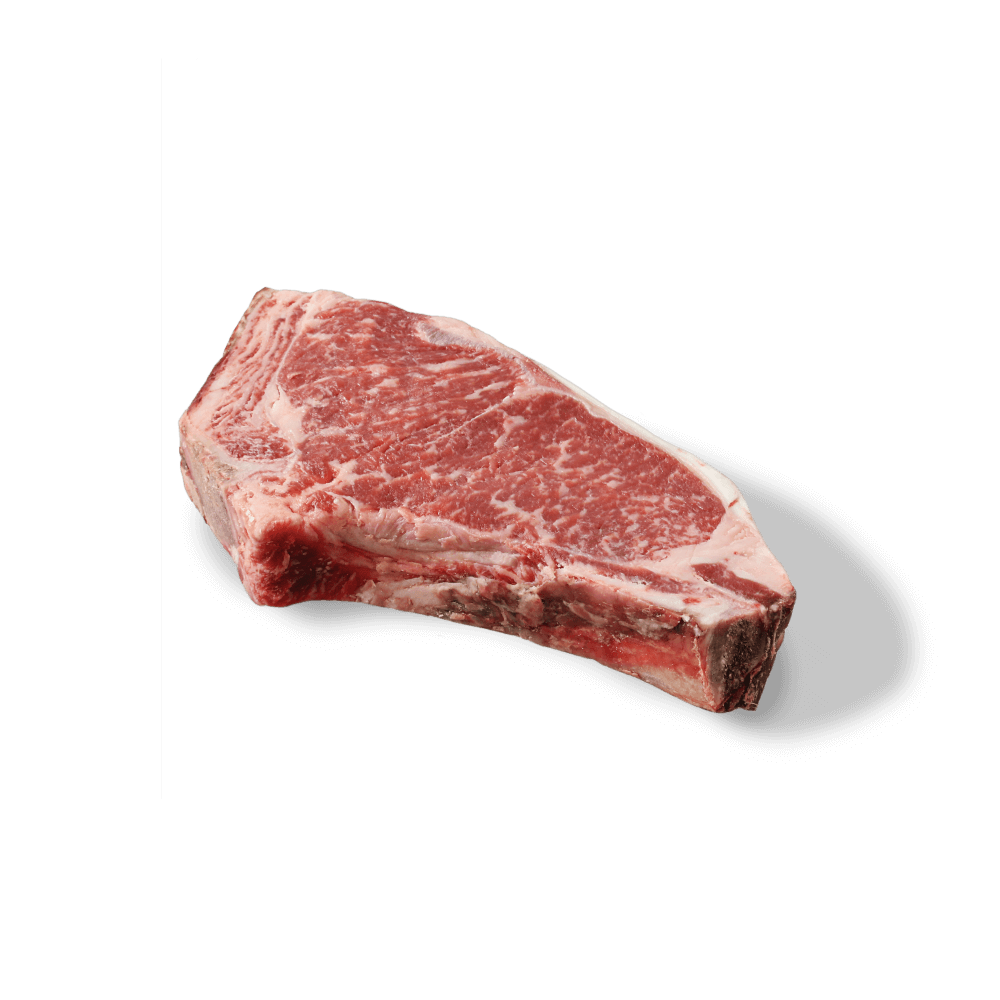 USDA PRIME
USDA PRIME
These Bone-in Kansas City Strip Steaks are graded USDA Prime, the top tier of quality in the U.S. On average, about 9% of graded cattle will achieve Prime status, but taking things a step further, we inspect each primal that moves through our facility to guarantee quality. If we don’t think a piece deserves the Prime grade, we won’t ship it.
 HOLSTEIN CATTLE
HOLSTEIN CATTLE
Our Kansas City Steaks are cut from Holstein cattle, raised in California predominantly in the Southeast corner of the state. The size (diameter) of Holstein steaks will be smaller than the Angus, which will allow for a thicker steak.
 SHIP FRESH
SHIP FRESH
We cut these steaks fresh the day we ship out, and once they are received they are good for 4-5 days in your refrigerator, or 6-7 months in the freezer.
 DRY AGED
DRY AGED
Before these were processed into steaks, these Bone-in Kansas City Strips were dry aged for 30-35 days.
This steak is the first cousin, twice removed, on the Mother’s side, of the Dry Aged New York Strip. It’s simply a New York with an attitude (a bone) left in. Unlike the round longer bone found in the Prime Rib and the Rib Steak, the bone in the Kansas City Strip is from the lower vertebrae, and is thinner and wider than the rib. Picture a Porterhouse steak; remove the Filet Mignon and the bone at the bottom of the Filet Mignon. What remains is your Kansas City Strip.
The topic of discussion here is whether or not the presence of the bone improves the flavor of the steak in the cooking process. I’d say the unwashed masses (as well as the washed ones) are split evenly on yes and no. I myself, not being one to take a stand, come down squarely on the “no” side.
Here’s the reason: I believe that the only time the bone comes into play (flavor wise) is in a braising environment. There, by virtue of the slow process and the liquid enveloping the meat you have an interaction and more importantly, a transfer medium (the liquid) that will draw out the essence of the bone (marrow) and impart it to the meat. On the grill, the transfer medium is absent. Additionally, being vertebrae, there is finite marrow when compared to the rib bone.
The second “bone of contention” (pun fully intended) is being able to chew on the bone. Probably not a good idea in a formal setting but great fun otherwise. But again I’m not truly a fan because since this is a thin wide bone, there is hardly any meat around it; certainly nothing like the amount found between the rib bones. You might have to wrap a twenty dollar bill around it to even get your dog to take it. Now, before those of you on the ‘yes’ side storm the parapet, let me wax poetically about leaving the bone in.
The presence of the bone, when the steak is cut thick enough (2”to3”) will allow you to grill it in the fashion of the Tuscan Bistecca Fiorentina; which is to sear both sides first, then finish indirectly with the bone side down. The presence of the bone serves the same function as the heat shield on a space capsule (ok, ok, that’s a bit of a stretch); it buffers the direct heat from below and prevents the side directly exposed to the heat source from overcooking.
See how even handed I can be!
Something to note about our Dry Aged Kansas City Strips is that you might notice the bones are darker than you might see in a supermarket display. This color is a result of the dry aging process. Dry aged beef is exposed to the open air in a temperature controlled environment for extended periods of time, our product goes a full 30 to 35 days. One of the visible differences of dry aged beef is the darkened bones. These are the hallmark of a true dry aged beef product, versus a wet aged product.
![]() USDA PRIME
USDA PRIME![]() SHIP FRESH
SHIP FRESH

